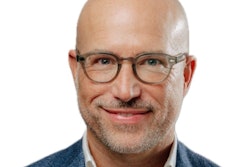The early data on youth participation in the 2022 midterm elections has given student voting activists cause to rejoice. About 27% of people ages 18-29 cast a ballot, according to an initial estimate by the Center for Information & Research on Civic Learning and Engagement (CIRCLE) at Tufts University. It’s the second-highest youth participation rate in a midterm over the past 30 years, just slightly behind the turnout in 2018.  Clarissa Unger, co-founder and executive director of SLSV
Clarissa Unger, co-founder and executive director of SLSV
“We're really maintaining that level of high youth turnout, which is incredible to see,” said Clarissa Unger, co-founder and executive director of the Students Learn Students Vote Coalition (SLSV). “2018 wasn't an anomaly. This is the path we're headed on going forward.”
Youth participation in elections has jumped in recent years after languishing for decades. From a low of just under 20% in the 2014 midterms, the youth voting rate rose to 28% in 2018. Rates for presidential elections have been even higher: 39% in 2016 and 50% in 2020.
According to Abby Kiesa, deputy director of CIRCLE, a major factor in the increase has been the work of organizations that arose after 2014 to try to improve campus voting rates.
“It has been absolutely remarkable how much [these] folks have been able to get huge institutions to change so they make sure that no student goes through campus without being registered to vote,” she said.
According to the Student Vote Research Network’s (SVRN) State of the Student Vote: Fall 2022 Report, the number of schools that submitted a plan for achieving full student political participation increased slightly over 2020, a notable accomplishment in a midterm year when national elections typically get less attention. These schools served roughly 300,000 more students than the 2020 cohort, and the quality and depth of their plans were also improved.
Unger also credited new tactics with the high youth rates.
“We saw a lot of really incredible innovations: including voter registration in new student orientation, using campus’ own student lists for outreach, accessing federal work study funds for voter education efforts, and integrating voter engagement into learning management systems,” she said.
There was also increased support from the U.S. government. The Department of Education issued a Dear Colleague letter reminding colleges that they have a responsibility to distribute voter registration forms and promoted the letter extensively, including a video from Secretary of Education Dr. Miguel A. Cardona.
The political climate has also played a role in increased youth turnout.
“It's the Trump effect; it's the increased polarization that we're all living through,” said Dr. Melissa R. Michelson, dean of arts & sciences and professor of political science at Menlo College and a founding member of the SVRN.
Increases in student and youth voter participation line up neatly with the rise of the former president, who inspired passionate supporters and opponents and made politics central to the cultural conversation.
“When political parties are polarized and it's more antagonistic and more extreme, that has a lot of negative consequences,” said Michelson. “But maybe one positive consequence is that voters have much stronger partisan identities that influence them to become more politically involved."
According to Michelson, Trump’s absence from office in 2022 may explain why youth turnout was slightly lower than in 2018. However, this may not be a concern in 2024: on Tuesday, Trump announced his candidancy for the Republican presidential nomination.  Abby Kiesa, deputy director of CIRCLE
Abby Kiesa, deputy director of CIRCLE
Although some young people will be galvanized, Kiesa thinks that others might be pushed away from political participation.
“Some young people, not necessarily the most engaged, who are already so frustrated with political conversations and the partisan rancor will maybe want to tune out,” she said.
The student vote movement will have to face other challenges, if it is to maintain the current levels of participation and post future gains.
Though the total number of schools with student voter plans increased, over 100 campuses that submitted them in 2020 did not for 2022. Additionally, laws in Maryland and California mandating that colleges have student voter plans produced disappointing results: a slight increase in Maryland and a decrease in California.
“It's great to have these policies, but if we don't support investment in their implementation, they don't make a lot of impact on their own,” said Unger.
However, there are also opportunities for future growth: the report says that there are nearly 400 schools who did not create action plans for 2022 but which have indicated interest, including a number whose presidents have signed a commitment to 100% student voting.
The SVRN is also beginning more rigorous research into student voting.
“A lot of this work until now has been more reliant on anecdotes and correlations than we would like,” said Michelson. “We're making a shift now: we're doing randomized controlled trials and collecting more robust evidence to test our theories about how to maintain high student voter participation.”
The SVRN report concludes that, although this year’s youth vote numbers are a worthy source of pride, there is also still much work to be done.
“It’s more important than ever to STAY FOCUSED,” it says.
Kiesa agrees.
“We can do so much better than 27%,” she said. “And 27% is something to celebrate.”
Jon Edelman can be reached at [email protected].















